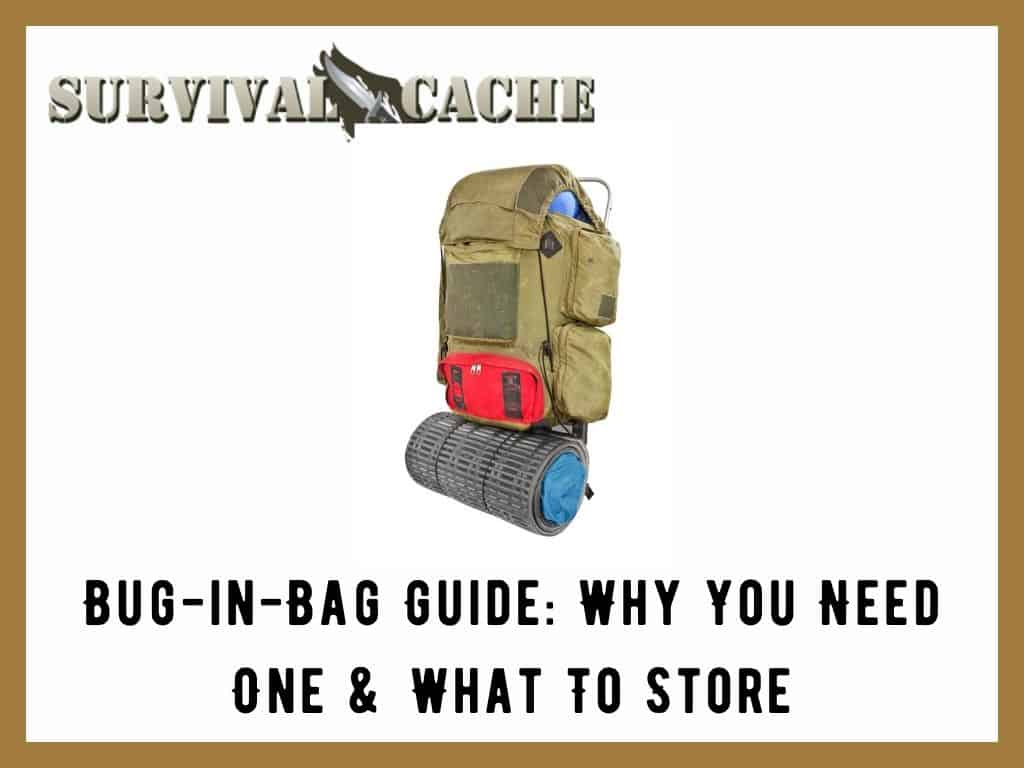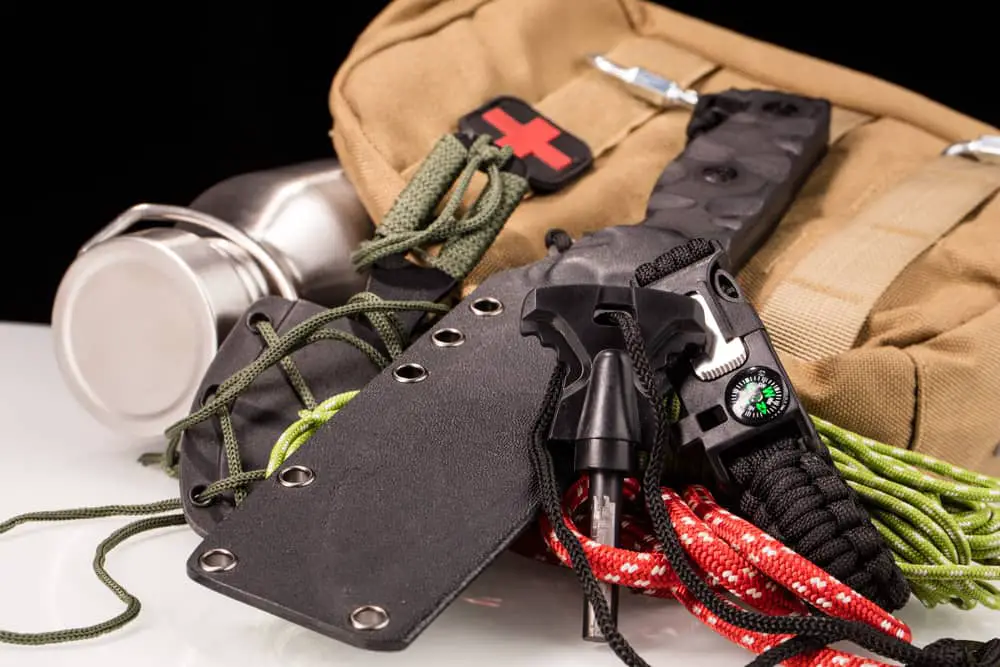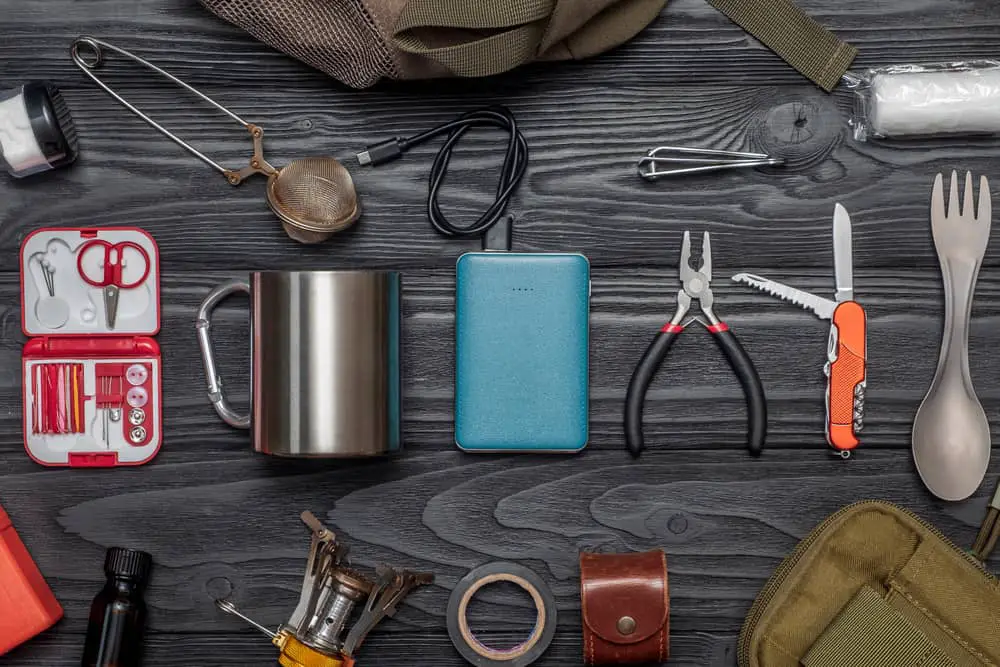Before we get to why I’d recommend that everyone who pursues some degree of preparedness should have a bug in bag, I want to run through what bugging in covers. Here are some SHTF scenarios where a person may wish to bug in rather than bug out.

- The SHTF scenario in question (natural disaster, breakdown in society, power outage, state-sanctioned curfew, etc.) has meant that it’s nigh on impossible to get to your preferred ‘bug out location’.
- There is a high chance that your bug-out location will be compromised or has already fallen therefore you do not have another safe haven to bug out to.
- A member of your family/household is ill or injured and moving them to another location is not on the cards.
- All of the intel you have gathered suggests that in this particular instance, you and your family/friends will be safer staying put.
The Brits have a phrase: “An Englishman’s home is his castle”. Which when interpreted through the prism of a SHTF scenario, equates to your residence doubling as both a defendable fortress and a shrine of sanctuary. Which sounds like a great place to ride out the storm.
SKIP AHEAD
So Why, If You’re Hunkering Down Would You Need A Bug-In-Bag?

You’re staying put, so where’s your bug-in bag? Sounds like a contradiction doesn’t it? Well, yes and no. You are opting to stay put, but that’s far from the end of the chapter as far as bugging in is concerned. Regardless of which SHTF predicament you find yourself in, a bug-in-bag is going to help you in several ways:
Time
Specifically, the time a bug-in-bag will save you. This is often one of the most crucial aspects to responding to an emergency. Having as many useful, lifesaving items close-to-hand will facilitate a quicker response to any immediate threats.
Effort
Having a bug-in-bag with everything you need to ride out whatever crisis emerges will dramatically decrease the amount of work you have to do.
Organization
Being familiar with your bag’s contents and how to use or get the most from these, will bolster your efficiency and behave as a survival multiplier.
Improved mental state
The act of preparedness is as much an exercise for the mind, as it is a physical drill or response for the body. Your bug-in bag was prepared by you, to respond to likely threats. A welcomed side effect of this is a more resilient state of mind. A calm head on your shoulders will be beneficial for any high stress scenario.
Adaptability
Although you are staying put by bugging in, that doesn’t necessarily mean that you will remain static. You may have to relocate rooms, or floors depending on the threats you face and the layout of your home. You may need to move objects or help carry incapacitated family members. This means a bag holding everything you need that can be grabbed or worn (preferably one that can free your hands) simplifies the process of adjusting your location within your domain, which in turn could dramatically improve your chances for survival.
Bug-in-Bag with a view to Bug Out?
Following on from adaptability, in the worst possible case of where the decision to bug in fails due to a change in circumstances etc., a good bug-in-bag will still represent relevance for bugging out. Some of the contents may have been very specific for the ‘home base’ environment, but the majority of these should, along with the skills required to use them – be interoperable with bugging out.
What Features To Consider From The Bag Itself
This really comes down to personal preference, there’s no definitive right or wrong answer, but the bag you select should be tailored to your requirements. It must always be a help and not a hindrance to your survival. That said, let me suggest which features I look for in such a bag.
I have already mentioned that a good bug-in-bag needs to be adaptable and should ideally offer hands-free carry, so that while transporting it’s easy to move supplies, operate devices, and help other members of my household if required. Therefore, a backpack works best for me. There are some good sling bags (cross shoulder) options out there, but I prefer being able to spread whatever load is in the bag evenly across my back.
I wouldn’t go for a bag that was smaller than 35 liters. I don’t want to stuff the backpack until it’s full to capacity either, rather I would prefer to leave some spare room inside. You never know if you will need to hurriedly add a couple more items at the last moment.
As I’m not looking to fill the backpack to max capacity, an ideal feature of the bag would be to have some decent cinching options, where you can compress any slack/space down inside the bag, allowing it to be more low profile which makes it less likely to snag or catch on furniture, door handles etc. when worn.
Personally, I would go for a durable, dark/neutral colored backpack that has limited internal organization but can offer larger main compartment capacity; most likely a frameless hunter backpack. I would look for attachment points to be able to hang some carabiners or places where I could add zip-tied gear. I would just add that I would avoid a backpack that screams tactical. If I had to bail out of my bug in location, I don’t want to be carrying/wearing a bag that would mark me as a target of interest for would-be opportunist thieves or nefarious persons.
What To Include in a Bug in Bag: 33 Items

What you should pack into your bug-in-bag is not only dependent on the crisis or SHTF scenario you are likely to face, but it will also have to reflect and complement your own unique skill sets and knowledge. For example, if you were a medical practitioner, your bug-in-bag may contain a professional trauma kit, which would likely be more specialized than the medical kit that someone who only knew basic CPR/first aid would incorporate into theirs.
Working to the same principle of an emergency portable bug-out-bag being able to serve the user for 72 hours, the bug-in-bag should last the same time. This period of three days is the average timeframe required by emergency services to mobilize and get through to those affected by a crisis.
That said, there are some items that you would benefit any bug-in-bag owner. The following suggestions have been selected with the principle that the bug in location is a structured building, within an urban context. Adjustments would need to be made if your bug-in location were more rural or isolated, a mobile home such as an RV – or you were already on an outdoors hiking/camping trip when the crisis emerged.
I would also suggest that each adult member of your household had their own bug-in-bag, tailored to their requirements such as size, load capacity, comfort etc. It’s also worth having each member equipped with the skills required to fully utilize all bug-in-bag contents. Should the worst happen, and a family member is injured or incapacitated, the survivability of the group would not be compromised.
- Nalgene 32oz Water Bottles x2 – Additional water storage to compliment your Hydration reservoir.
- Hydration Reservoir 100 oz (3-liter capacity)
- Energy bars, freeze-dried food, canned meals, nuts, dried fruit for 72 hours.
- Portable stove and fuel source. If you have no electricity or gas to cook on – this will really come into its own – useful for boiling water too.
- Medical kit. Relevant to your experience/proficiency level. Likely injuries that you may need to treat yourself or other members could include cuts, scrapes, bruises, sprains, broken bones, burns, smoke inhalation, stab/gunshot wounds.
- Medicines. Prescription drugs for any existing health conditions as well as painkillers, anti-inflammatory medication, antihistamine, general-purpose antibiotics.
- Viral mask and several pairs of disposable gloves. Covid19 is one concern – but if you have to treat others for wounds etc., this combo will ensure both hygiene and protection for yourself and others.
- Hand sanitizer. In case there is no running water or to quickly sterilize medical equipment.
- Folding Tool Roll bag. If you’ve opted for a bug-in-bag with fewer compartments in favor of larger main compartment storage – then a small tool roll bag can help readdress a lack of organization without devouring loads of internal capacity.
- Sleeping bag and inflatable sleeping pad. Just because you are home, doesn’t necessarily mean that the bedrooms will be the best place to lay low. Having a mobile sleep solution will be invaluable if you have to bug out for any reason. Also, as a group your household should occupy the same sleeping quarters to maximize your chance for survival.
- Change of Clothes. Spare pairs of socks/underwear and practical footwear – Even though you are at your residence, there is no guarantee that all home conveniences will be accessible to you.
- Leather/ Heavy Duty Work Gloves you may need to put out a fire or erect barricades with power tools – a good pair of gloves will ensure you look after your hands – and that they in turn look after you and your loved ones.
- Low Powered Binocs or Monocular. Perhaps you need to check in on a neighbor – but it’s unsafe to leave and attempt a door-to-door visit. A pair of low powered field glasses or equivalent will be great for urban or suburban environment and will substantially increase your situational awareness of what is happening around your abode.
- Local Map/No products found.. Should you need to leave your home, having the ability to safely navigate is essential. Street maps will be invaluable if you live in an urban environment
- Orbit 26097 Gas & Water Shut Off Tool. It may be essential to shut either of these utilities off in the event of a burst pipe, leak or fire.
- Couple of rolls of toilet paper with cardboard cores removed and personal hygiene products.
- No products found. 2000 lumen of blinding light capability, which can double duty as a defensive weapon or signally device.
- Nitecore Nu32 Rechargeable Headlamp. For when you need more handsfree light than chem lights or candles can offer.
- Firearm. A handgun which can easily be concealed and/or a shotgun with enough corresponding ammo for home defense purposes.
- Fixed Blade, Full Tang Knife. So many potential applications cutting, carving, self-defense and the list goes on. Should be removed from the bug-in bag and worn as soon as possible to keep it close to hand.
- Smartphone & charging cable. Your best means to find out what is going on outside and communicate with friends and family – provided cell services are still operating.
- Spare Batteries. A healthy supply of AAA or AA as the most common types.
- Anker PowerCore Portable Charger KeepCharged and complete with all USB leads required for all rechargeable devices
- Hand Crank Radio. Discover what is happening in your area without worrying about batteries. This model has a flashlight, can be charged through either solar power or by winding using the hand crank, and can double up as a power bank to charge other devices.
- Motorola Walkie Talkies Pack Of 3 For communicating with members of your household (and neighbors if you have incorporated them into your bug in plan).
- Lansky Battle Axe with integrated prybar – useful for demolishing walls, prying open locks/seals or clearing windows – this example has an insulated handle to prevent electrocution if cutting a mains power supply and a gas valve and hose wrench has been incorporated into its design.
- Gerber Center Drive Multitool – Ergonomic multitool especially suited to removing/driving screws. Comes with competent spring-loaded pliers. This multitool model benefits from one-handed deployment for all tools.
- Fire extinguisher or Fire Blanket. You don’t want your castle to burn down if you can help it and give yourself the best means for extinguishing or escaping a fire.
- Water purifier – Something like a Steripen or Sawyer Mini Filter can give you peace of mind should your water become disconnected and need to be disinfected/filtered. These are mobile solutions – again if you have to bug out, they’ll come in handy.
- Candles/Chem Lights with an individual burn/light time of 12 hoursburn/light time. If you’re power is out these can help give your batteries a rest at night. Use the chem lights to mark out potential exits or awkward passageways/ stairs to avoid accidents. Use the candles for work/reading tasks only, to conserve and to prevent a fire.
- Duct& Masking tape – So many applications – but in a bug in scenario its useful for preventing windows from shattering, sealing off rooms against smoke etc..
- Safety Goggles – Whether it’s because of flying debris, a dangerous DIY task or to keep out smoke out of your eyes, these are a must and weigh almost nothing.
- Gas Mask – The most immediate house related danger you could face, smoke from electrical fires, storm damage or arson mean every member in your household should have one in their bug-in-bag.
Final Thoughts
Hopefully these suggestions will prove useful to get you thinking along the lines of what would be best to include in your bug-in-bag.
I would just like to leave you on a couple of points to bear in mind when bugging in. Remember, that your bug-in location is your place of refuge but when it stops being this – you don’t want it to be your tomb. Take the time now before you find yourself in a SHTF situation to create a bug-in strategy that includes where you will spend the bulk of your time, e.g. which room, side of your dwelling allows for easy egress, field of view of your surroundings etc. Ask yourself lots of questions: Do you live above the 2nd floor? Have you a rope/ladder long enough to safely lower yourself to the ground if you needed to?
Have you hunkered down in a room that you could escape from if there was a fire? Do you have a survival plan in place with your neighbors, a means to communicate with them if the power went down?
Aside from using self-posed questions like those suggested above to perfect your planning, I find it helpful to imagine that I am not staying in my home when bugging in. By taking this line of thought, then you will build a much more versatile bug-in-bag, that can hold its own. This way anything extra that your existing home can offer for improving your survival is a bonus.
I would also suggest keeping a small chest or container that you can add essential tools (such as battery power drill, saw, rope ladder etc.) that you can grab easily and move to the locations of your home that may require repairs or barricades for hardening your home defense capabilities or for easy escape should it come to that.
